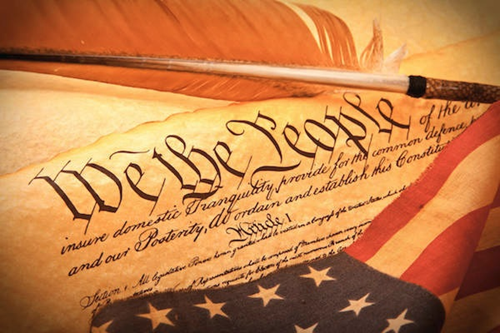Unit 3: The Constitution and Early National Period (1787-1820) Overview
Unit 3: The Constitution and Early National Period (1787-1820)

Unit 3: The Constitution and Early National Period (1787-1820)

Unit 3: The Constitution and Early National Period (1787-1820)
The U.S. Constitution was written and signed by men who craved independence from Britain but who were nonetheless steeped in its history and ideals. The U.S. Constitution starts with some basic precepts of English governance, but then adds some uniquely American twists — three branches of government that act to check and balance each other, for example. Although much thought went into the Constitution, the Framers left it open to amendment. The first ten amendments were ratified just four years after the Constitution itself and are known as the Bill of Rights.
The U.S. Constitution and the Establishment of Government
The U.S. Constitution, as adopted by the Philadelphia Convention on September 17, 1787, sets out three distinct branches of national government and provides powers to each that serve as a check on the others. The following sections offer key facts about each branch.
The Executive Branch: The President
The highest elected official in the United States, the President
- Is Commander in Chief of the U.S. armed forces. However, only Congress can actually declare war.
- Has the power to veto legislation passed by both houses of Congress (the House of Representatives and the Senate). Congress can override the veto only with a two-thirds majority.
- Appoints Cabinet officers, Supreme Court justices, and many other officials — subject to confirmation by the Senate.
The Legislative Branch: Congress
The Constitution provides for two houses of Congress: the House of Representatives and the Senate. The population of a state determines how many people it elects to the House of Representatives. Each state elects two Senators, so the Senate offers an equal playing field for small states and large states.
Congress has the power to make all federal laws, and only the House can introduce tax legislation. The Senate has the power to confirm or deny the President’s appointments to the Cabinet, the Supreme Court, and other key positions.
The Judicial Branch: The Supreme Court
Each justice is nominated by the President, confirmed by the Senate, and has the opportunity to serve in that position for life as long as he or she demonstrates what the Constitution calls “Good Behavior.” The Supreme Court effectively determines what the Constitution means.
Unit Focus
- Ratifying the United States Constitution
- Views of Federalists and Anti Federalists
- How the Bill of Rights led to ratification
- Effects of the United States Constitution
- Principles of the United States Constitution
- Contents of the United States Constitution
- Purposes of the United States Constitution
- Levels and functions of government
- Beginnings of the War of 1812
- Major events of the War of 1812
Vocabulary
Lesson Reading
Videos and Interactives (Click on Images to View Content)

